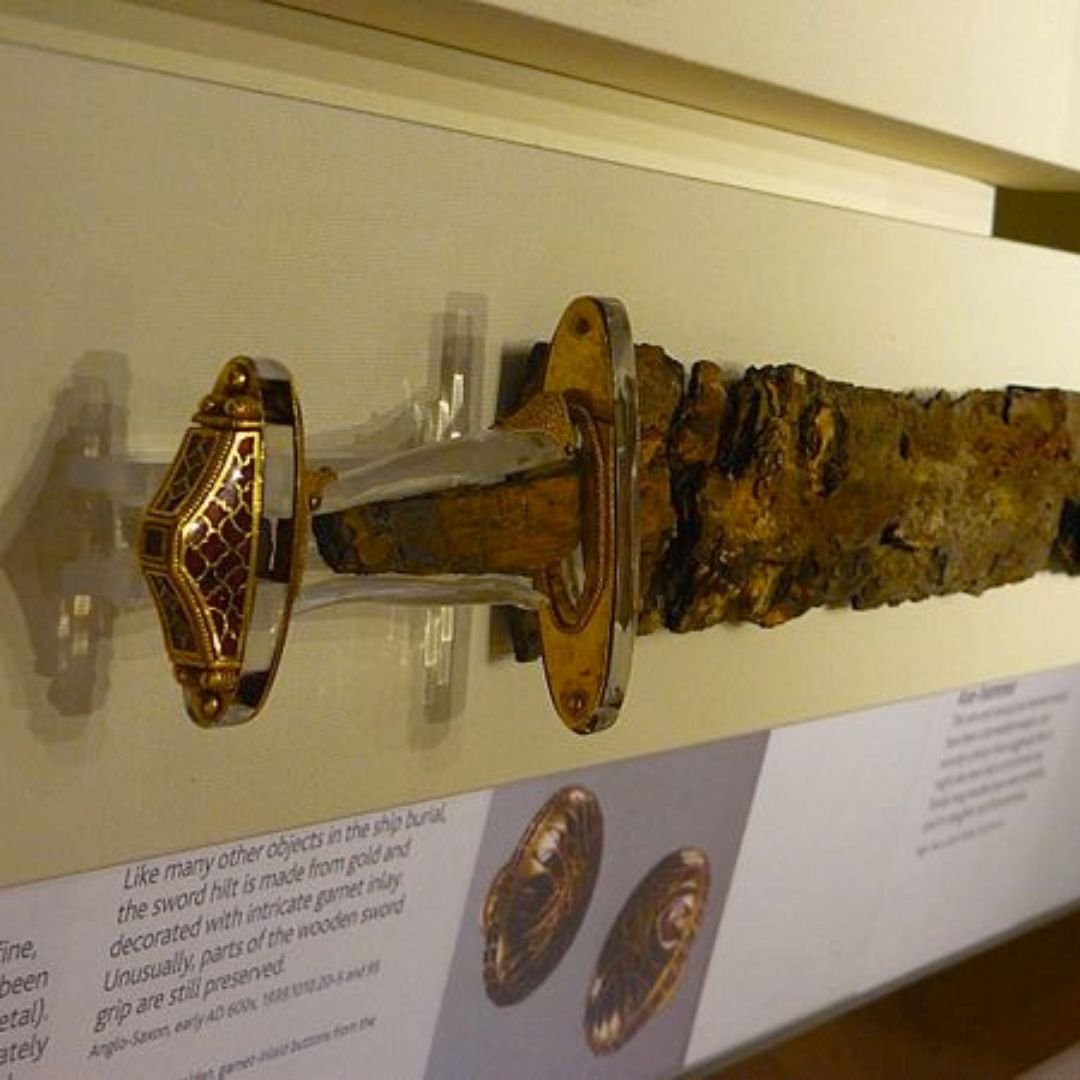This sword is one of the many artifacts discovered in the Sutton Hoo ship-burial, which is thought to have belonged to one of four East Anglian kings: Eorpwald, Raedwald and co-regents Ecric, and Sigebert. The artifacts of this burial were chosen to reflect the high rank of the king, and to equip him for the Afterlife.


